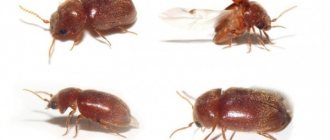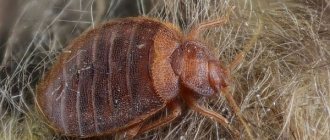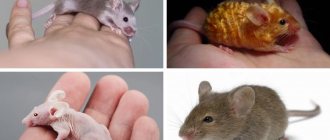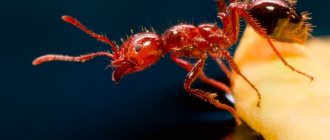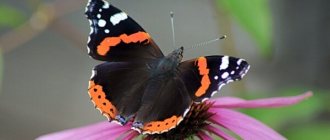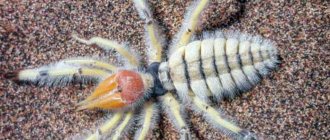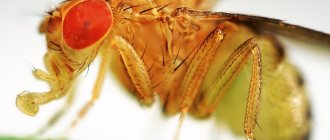Flying insects such as Drosophila flies are familiar to everyone, although not everyone knows what they are called. Throughout life, they occur quite often to any person.
Flies often swarm over warehouses with vegetables and fruits in market places, and the most unpleasant thing is that they annoyingly circle in whole flocks over a table with fruit or a left-over piece of sweet pie.
Despite the fact that these winged birds are completely safe for humans, they do not bite and do not carry dangerous bacteria, but with their intrusive presence they quite seriously irritate the psyche.
In nature , they can be found in the vegetable garden, in the garden near fruit-bearing trees and overripe berries. With the onset of cold weather, fruit flies usually move into houses, finding warmth and a favorite treat on the owners’ table.
Who are fruit flies?
If you accidentally leave any fruit in a container in an open space, after a while the process of rotting begins, and small midges will certainly begin to circle over this place. This swarm is sometimes quite difficult to get rid of.
Despite the fact that their life cycle is very short and they are completely harmless, they can seriously disrupt the process of preparing for the winter. Feeding on the nectar of fruits and berries, they fall into the container, die, and are difficult to catch from the total mass of jam.
The Drosophila fly has a second name - fruit fly. These insects have been living near humans for a long time.
This is a necessary measure for their survival, since waste in the form of leftover food in the trash can, on the kitchen table, or floor allows winged insects to reproduce.
They feel quite comfortable next to a person, which cannot be said about the person himself, who is constantly irritated by the annoying behavior of flies.
The fly is small in size, its body length ranges from 1.5 to 3 mm. In comparison to its small body structure, the fly has wings on its back that are significantly larger than its size.
Under a microscope, you can see that the eye color of Drosophila is red. It is impossible to see with the naked eye.
The insect's body is yellow-brown in color. Moreover, there is a striking difference between males and females: the body length of a female individual can reach 2.5 mm, in males it is much shorter, with a noticeable dark end of the body.
The abdomen of the female is characterized by a rounded shape, while in the male it is pointed, has a cylindrical shape with a blunt end, and small bristles are located at the base.
In females, the dorsal sclerotized part of the segmental ring has 8 developed segments. The male has 6 – 8 (and the 8th part contains the reproductive system). In addition, the female individual has a large number of chitinous plates on her abdomen.
A distinctive feature of these flies is that they always swarm in a flock. It is almost impossible to find a lone flying individual. They can often be seen above the soil of a potted plant. If one fly is found, a whole swarm can soon be expected.
Video
Drosophila
Determination of gender
Drosophila are characterized by XY sex determination. Unlike humans, in Drosophila sex is determined not by the presence of a Y chromosome, but by the ratio of the number of X chromosomes to the number of haploid sets of autosomes. With a ratio equal to 1, the individual develops into a female, and with a ratio equal to 1/2, into a male [comm. 1] . In case of violations, infertile individuals are formed: the so-called intersex (if this ratio lies between 1/2 and 1), super males (ratio less than 1/2) and super females (ratio greater than 1). The presence of the Y chromosome does not affect sex in any way, but males without it are sterile, since it contains the genes responsible for spermatogenesis.
Number of X chromosomes Number of haploid sets of autosomes Ratio of the number of X chromosomes to the number of haploid sets of autosomes Sex (phenotype) [5]
| 3 | 2 | 1,5 | Superfemale |
| 4 | 4 | 1 | Female |
| 3 | 3 | 1 | Female |
| 2 | 2 | 1 | Female (normal) |
| 2 | 3 | 0,(6) | Intersex |
| 1 | 2 | 0,5 | Male (normal) |
| 1 | 3 | 0,(3) | Supermale |
The key gene in determining the sex of Drosophila is the sex-lethal (sxl) gene. It is the difference in alternative splicing of this gene that gives rise to differences between the two sexes. The so-called numerator genes (sis-a, sis-b (sisterless-a, sisterless-b), runt (runt)), localized in the X chromosome, and denominator genes ( denominator) (dpn (deadpan), da (daughterless), emc (extramacrohaeta), etc.), localized in autosomes. Both of them are transcription factors, the ratio of which determines the alternative splicing of the sxl gene. Activators (numerators) and repressors (denominators) are capable of forming complexes. Depending on the ratio of the number of these genes, the activators will either overcome the action of the repressors, or the repressors will suppress the activity of the activators. In the first case (with the ratio X_A=1, the genotype is female), the sxl gene will begin to be read from the proximal (early) promoter. Then, during alternative splicing, the active protein product sxl will be formed, which is a splicing factor and, by binding to its own pre-mRNA, fixes this splicing variant. In another case, if repressors suppress activators (ratio X_A = 0.5 - male genotype), transcription of sxl will begin from the distal (late) promoter. In this case, an inactive protein is formed, since the “male exon” (third), in which the UGA stop codon is located, is not cut out, preventing the formation of full-fledged mRNA.
The female sxl protein product is an active splicing factor not only for its own RNA, but also for the pre-mRNA of the transformer (tra) gene. In males, sxl is inactive as a splicing factor, so the product of the transformer gene is also an inactive protein.
The next step in the cascade is the Doublesex (dsx) gene. In females, the tra protein (together with tra-2, which functions in both sexes) modifies its splicing, which leads to the formation of the DsxFem protein (female variant). In males, this modification does not occur; splicing occurs differently, and a different protein is formed - DsxM (male version). These proteins are transcription factors that influence the activity of genes responsible for the development of phenotypic sex.
Species of Drosophila fly
Today, there are 1,590 species of fruit flies.
The most common of them were the following:
- Drosophila black. Often found in gardens, orchards, strawberry beds, and other berries that are beginning to overripe. The individual has been studied better than other species. It is characterized by a yellow or light brown color with bright red visual organs. The size of the body varies from 2 to 3 mm;
- fruit fly. Preference in food is given to the juice of rotting fruits. The chest is 2.5 - 3.5 mm, the wingspan is up to 6 mm. The back is yellowish-brown, the yellow belly has brown spots, the chest is brown or yellow, and the visual organs are bright red. Males have a small black spot under their wings. Until full maturity, an individual develops from 9 to 27 days; 13 generations can change during the season. Females are larger in size compared to males;
- flightless drosophila. The insect has poorly developed wings, therefore it is not capable of flight; it moves by crawling or jumping. This species was obtained by crossing two different natural species of fruit flies. The size of a non-flying fly reaches 3 mm. Rotting fruits and vegetables became the main priority in food. The life cycle is 1 month;
- Drosophila is large. Often found in vegetable stores, especially if there are a lot of rotting vegetables and fruits. The size of the insect can reach 4 mm. The color of the head is yellow-brown, the body is light or dark brown. The lifespan is just over a month. Over the entire life cycle, females lay from 100 to 150 eggs.
Since Drosophila feeds mainly on fermentation products, it is attracted by the smells of rotting vegetables and fruits; it can often be found in storage facilities for vegetables, fruits, and other places abounding in fruit fermentation.
How long do they live?
To understand how long fruit flies live, it is necessary to study their life cycle. The adult often lays eggs in rotting fruit.
At an average ambient temperature of +25 degrees, within 10 days the eggs reach the adult stage. At temperatures below +18 degrees, the development of the larvae slows down by 2 times.
The average life cycle of Drosophila is 1 – 2 months. Life expectancy depends on external factors (environmental conditions). At high temperatures, the lifespan of a fly can be less than 1 month.
During their existence, females produce an average of 400 clutches of eggs measuring 0.5 mm. Under unfavorable environmental conditions, the number of eggs is significantly less. However, the shorter the life cycle of flies, the more offspring they try to produce.
Drosophila reproduction
Reproduction of Drosophila, like many winged insects, occurs in several stages.
The main stages of this process are as follows:
- the female lays eggs;
- after the larvae mature in the eggs, they are born;
- the larva reaches the required size, turning into an adult.
Since the fly's body has 8 chromosomes, its offspring develop well in rotting fruits, characterized by a semi-liquid consistency.
The body of the larvae is equipped with specific float chambers, thanks to which they are able to stay afloat.
Larvae
The average size of a Drosophila fly egg is 0.5 mm; when the time comes for the larva to be born, its size increases significantly.
Under normal weather conditions, in a favorable environment rich in organic matter, Drosophila eggs mature faster, the larvae emerge a day after laying, and are 3.5 cm in length.
Within 5 days, intensive growth occurs, accompanied by molting, which occurs 2 times (one day after hatching, then 2 days later).
The larvae are characterized by high adaptability to the environment, since fruit midges lay eggs in the pulp of rotting fruits, which is favorable for offspring.
The first days after being released from the egg, Drosophila larvae balance on the surface of the fruit juice, then delve into the pulp, which for a while becomes both home and food for them. After 5 days, the larva pupates and maintains this state for the next 5 days.
A young female exhibits the ability to mate within the first 12 hours after birth. The male's sperm obtained after mating is retained by the female for further reproduction of offspring.
Are fruit flies dangerous?
The flies themselves are not dangerous to humans: they do not bite, since their jaws are simply unable to bite through even the thinnest skin.
Flies are annoying with their flickering, they constantly come to hand.
However, this is not the most unpleasant consequence that an insect invasion leads to; the danger of fruit flies lies elsewhere. Pests feed on organic matter, including waste from landfills and animal feces, and their sweat. They can contain dangerous bacteria, which flies carry on their legs or proboscis and then leave on food.
Thus, a pathogenic bacterium can enter the human body, which, if the immune system is weakened, will lead to intestinal infections. In addition, eating food with fruit fly eggs on the surface causes diarrhea and nausea, accompanied by a rise in temperature.
Where do fruit flies come from?
Usually these dipterous insects can be found in the summer, when it is warm enough outside. This state of climate is the most favorable for them, therefore, with enough food, they can seriously irritate the psyche.
Rummaging over potted flowers, fruits and vegetables that were accidentally left on the table, they are seriously annoying with their intrusiveness.
Therefore, despite the fact that they do not pose any danger or threat to health, many people try to get rid of them.
From fruits and vegetables
If an apple or other fruit lies on the kitchen table or in the room for a long time, a natural process of rotting occurs. Fruit aromas are the most attractive to these winged insects.
Therefore, the fruit fly, together with its relatives, is often found in these places. You can often see insects swarming over bowls of berries intended for making jam or over rotten vegetables that were not removed from the beds in time.
From the ground
If the soil is rich in organic fertilizers, fruit flies try to lay eggs in these places so that after the larvae appear, they have the opportunity to feed normally.
At normal temperatures, the larvae feel great, develop quickly, and grow stronger.
The faster and better the maturation process, the more likely it is to get large offspring in the future.
Through ventilation
Often in the summer, Drosophila flies, attracted by the sweet smell of fruits or some baked sweets, enter the apartment in all available ways.
Since their size is very small, they can fly into the house through the smallest openings. Ventilation works on the principle that all odors in the kitchen go outside through the hood.
Smelling a sweet aroma, the flies rush towards it, bypassing all obstacles. Therefore, they can enter the apartment through the ventilation.
From indoor plants
Many adults lay eggs in flower pots. Housewives often use organic fertilizers for growth, which also has a beneficial effect on the development of Drosophila larvae.
The substances contained in fertilizers for flowers not only promote the growth of plants, but also feed parasites, whose eggs are pre-laid in fertile soil.
From leftover food
Quite often, the reason for the appearance of Drosophila flies in an apartment is leftover food that is not removed from the kitchen table in time or thrown out of the trash can.
The smell of rot may attract a swarm of winged insects , which will intrusively circle in one place in search of a tasty morsel. Even if you throw out the contents of the trash can, the winged insects will remain in the same place for some time, waiting for a new portion of food.
If you find an error, please select a piece of text and press Ctrl+Enter. We will definitely fix it, and you will get + to karma
( 2 ratings, average: 5.00 out of 5)
How to get rid of fruit flies in an apartment?
You can get rid of fruit flies using folk and special remedies. It is best to take a comprehensive approach to solving the problem, otherwise the invasion of flies will repeat itself after a while.
To effectively get rid of insects, you should:
- Figuring out where flies breed and live is where you need to make the most impact.
- Clean the kitchen: throw out spoiled food, clean out trash cans and drains.
- Comply with all food storage conditions.
- Remove fallen, dry leaves from indoor plants, and put rotten flowers in the trash can.
- Wash pets' bowls thoroughly, especially if they contained plant-based foods.
- Treat the kitchen with anti-fly products, paying attention to their habitats.
Attention! The most important step when trying to breed fruit flies is to eliminate their source of food, because without food they cannot survive for long.
Traps
You can get rid of flies using traps; this is one of the simplest and most effective ways. To fix the problem, you need to do the following:
- Choose bait. It can be any spoiled fruit, but it is best to take bananas, apples, honey, and berries. Drosophila are also not against enjoying juices and jams, apple cider vinegar. An excellent solution would be to use fruits that have already been eaten by flies for the trap, because in any case you will have to throw them away.
- Next, you need to place the selected bait in a plastic bag and leave it open in the kitchen, preferably in the place where insects fly most.
- For greater efficiency, you can close the bag, but make small holes in it so that pests can get inside. It will be difficult for them to fly back.
- When a large number of individuals are trapped, you should quickly close the bag if it was open.
- Then you need to throw the trap in a landfill; do not leave it in the trash. If the bag accidentally breaks, the flies will become free and the fight will have to start all over again.
You can make a trap in another equally effective way:
- Cover the bottom of a glass jar with a thick layer of jam or honey.
- Place a sheet of paper rolled into a cone inside so that the narrow end comes out of the opening of the jar.
Attracted by the smell of “goodies,” the flies will crawl into a small hole, but will not be able to get out of it.
There is a third method that will help get rid of annoying flies. It is necessary to mix equal amounts of sweet liquid bait and any detergent, for example, for dishes. Cover a cardboard or an unnecessary plate with this mixture and place it in the kitchen. The flies will eat the bait, and the dishwashing liquid will act as poison.
Chemicals
Professional means will help destroy fruit flies much faster and more effectively than traditional methods and traps. However, some types of chemicals are quite toxic and can cause allergic reactions. Therefore, before using such drugs, carefully read the instructions.
There are many means to help get rid of fruit flies, among them are:
- Raptor. Works on the same principle as traps. It is a sticky tape, the surface of which is treated with a sweet odorous substance that attracts flies. Once on the Velcro, the Drosophila cannot get out of it. This product perfectly helps to get rid of both flies and other types of insects: ants, house flies, mosquitoes.
- Dichlorvos. It is produced in the form of an aerosol, which is sprayed in the habitats of fruit flies. It is noteworthy that Dichlorvos is odorless and is also suitable for getting rid of other types of pests. Before using the spray, you should remove any products that may be exposed to particles. After completing the procedure, you should thoroughly ventilate the room.
- Combat is a fumigator that comes with insect repellent liquid. For the device to start working, you need to connect it to an outlet. Toxic fumes have virtually no effect on humans, but they are good at getting rid of house flies, mosquitoes and midges. However, you should not leave the fumigator near the bed, in the bedroom while sleeping, or in the nursery.
Since most chemicals are quite toxic, do not forget about the following precautions:
- Wear thick protective rubber gloves and a mask when using sprays.
- Keep the sprayed product at arm's length, as far as possible from the respiratory system and mucous membranes.
- If there are symptoms of poisoning (nausea, dizziness, weakness), quickly remove the clothes in which the treatment was carried out, wash your hands thoroughly, rinse your mouth and drink 3-4 tablets of activated carbon.
- If your condition worsens, consult your doctor immediately.

